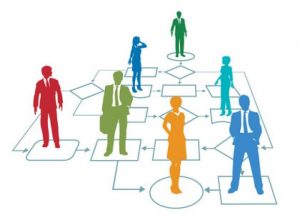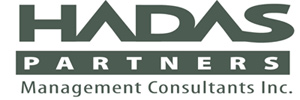When implementing a change, such as new technology or processes, week one after the implementation date is crucial. Momentum is gained or lost in that first week.
Usually communication and training are part of the implementation. So how come there is sometimes confusion, and even chaos, during the first few days and weeks after a change has been implemented?
The main reason is that often people aren’t sure about what exactly they need to do once the change is implemented. They feel their jobs have changed and they feel anxious.
The change may seem from the perspective of a PM or member of the project team. However, even the slightest change to an employee’s job will trigger insecurity. After all, their livelihood is at play.
Ignoring their anxiety is a risk. When scared, people can overreact. They may not form a midnight mob, but they will create extra work and stress for everybody. For example, they may drag their feet and cause delays, question excessively resulting in additional meetings and presentations, or start arguing resulting in escalations and all the work that means.
So if you are a PM what can you do? Here are three steps you can take:
- Drive for absolute clarity regarding people’s roles
- Go for experience over written procedure
- Train, implement, train
Job Clarity: Who does What, Exactly
The first major step is to very clearly define roles and responsibilities. The technical name for this activity is “Process Driven Job Design”. That may sound academic, but really all it means is that you have to group tasks into roles. Why is this important?
Let’s assume you have developed process maps as part of your change initiative. These process maps will tell you how tasks are connected. And if the map has swim lanes, it may tell you who needs to do the tasks in what order.
 However these maps are not from the perspective of someone doing their job. Employees want to know all the new or changed tasks they need to do in a day, a week, a month. In addition, they want to know how these new tasks fit with everything else they need to do. Ultimately, they want to see whether they are going to be able to do their changed job well.
However these maps are not from the perspective of someone doing their job. Employees want to know all the new or changed tasks they need to do in a day, a week, a month. In addition, they want to know how these new tasks fit with everything else they need to do. Ultimately, they want to see whether they are going to be able to do their changed job well.
The project team needs to develop a role-focused view of the new working environment, in addition to the process-focused one. Here is what you need to do, in the following order.
Steps to a role-focused view
- Document each task that is in the process, and identify how long each task takes, whether it’s an individual or group task, and what level of skill is required to perform the task.
- Document decisions that are made throughout the process.
- Group the tasks into logical roles. You may find a mix of too many administrative and planning tasks – maybe these should be separated. Or you may have tasks that require high levels of skill mixed with too many routine, repetitive tasks. And so on.
- Link the decisions to the roles to make sure the role groupings make sense. You may find that you have complex decisions bundled in a lower skill level role.
- Group the roles into positions that one person will perform. You may find that one role is substantial enough that one person can do it full time, in which case it becomes a position. In other cases you may be able to group two or more roles into one position.
- Now, finally, match people who are there currently to these new positions and see what gaps you have. If it’s a knowledge gap you can solve it through training. If it’s a behaviour gap (i.e., the position now needs to complete 10 reports a week by Friday) you can solve that through performance management. However if it is an innate skill gap (i.e., a data entry person needs to forecast using more sophisticated software), you have a staff alignment problem. That will be much harder and painful to solve.
The Power of Experiential Learning
There is no substitute for experiential learning to reduce people’s anxiety regarding their changed jobs.
Picture this: you have documented all of your processes with process maps and procedure documentation; maybe you even have clear new role and position descriptions. You feel good about how thorough you and your team have been.
But people still seem confused and antagonistic. All that work doesn’t seem to be good enough. What more do they want? Are they being unreasonable?
The answer is “no”, because most people are not very visual, in the sense that they cannot read process maps and procedures, and envision how they will do their jobs. Frankly, process maps, procedures and role descriptions are boring to sift through and difficult to communicate with. They are valuable project documents, but poor learning objects.
Here are two ways you can solve this problem without needing to create a whole stack of additional training materials. Each is an experience-based workshop, one geared for understanding processes, the other for understanding the new positions.
Process Walk-through Workshops
A process walk-through is literally that: people who are part of a new process walk through the steps in a workshop environment. This was mentioned in the recent blog on workshops.
 These are the benefits – people see with their own eyes: how handoffs are supposed to work; why tasks need to happen in a particular order; and, what needs to happen for everyone to work efficiently together. Everyone sees right away what doesn’t make sense and how it can be corrected. And you may be surprised how much does not make sense when just staring at a bunch of lines and boxes on paper.
These are the benefits – people see with their own eyes: how handoffs are supposed to work; why tasks need to happen in a particular order; and, what needs to happen for everyone to work efficiently together. Everyone sees right away what doesn’t make sense and how it can be corrected. And you may be surprised how much does not make sense when just staring at a bunch of lines and boxes on paper.
These sessions require some planning to make sure all of the right people are in the room and the workshop runs efficiently. But the value of having everyone understanding and fully on board with the changes is well worth the extra effort.
Day-in-the-Life Workshops
A day-in-the-life workshop focuses on a position (or several positions) that will experience significant change. People in those new positions go through a mock regular eight hour of the future.
To do this effectively also requires planning and preparation. You may require props (e.g., paper forms), a “sandbox” environment if the change involves new technology, and a way to project any computer images onto a screen. You will want to invite participants who will be filling these future positions. But, you may also want to invite members of other groups or departments. They can give feedback once they see how they will interact with the new position.
Plan for Training after Training
If you have seen training plans and schedules for change projects, you may have noticed that usually training ends by the day the change begins. This does not take into account that people forget what they have learned, and relatively quickly!
If you had to know how to do 100 things differently, and had the best training program in place, you would still forget many details just a few days after you learned these things.
Layered on top of that is the pressure to remember in a fast paced work environment, and the pressure to not make mistakes. Mistakes could impact how competent you look and feel (and that impacts your earning potential).
The solution is to plan for refresher or coaching sessions after people have had a few days on the new job. Just having these on the schedule will set many minds at ease and will reduce the initial anxiety.
That’s it. Go for role clarity, experiential learning workshops and refresher/coaching sessions, and you will notice a how your first week in the changed environment is smoother and easier!












